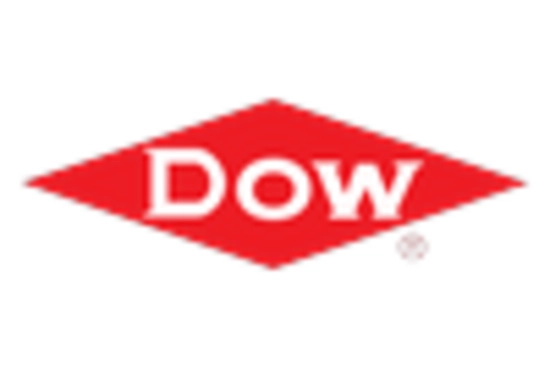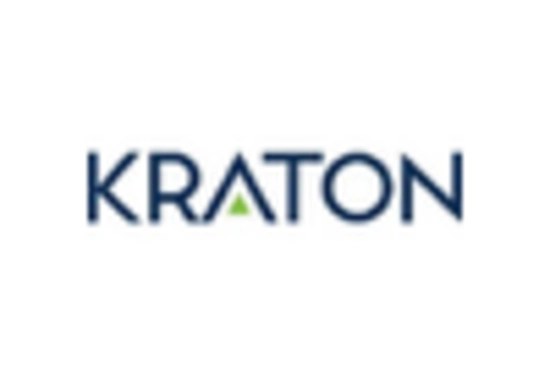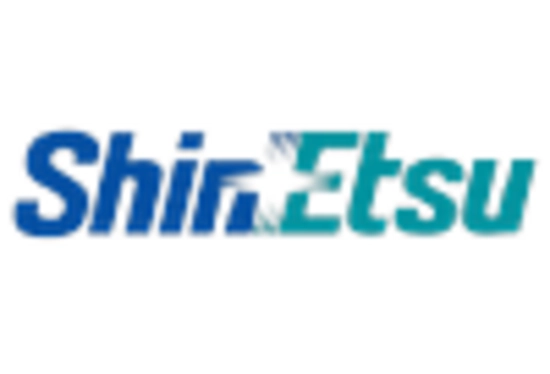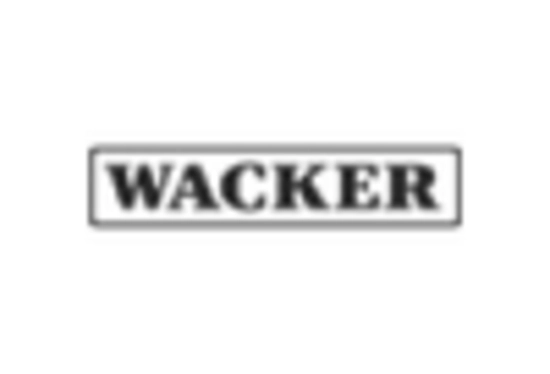Market Analysis
Silicone Elastomers (Global, 2024)
Introduction
The Silicone Elastomers market is poised for significant evolution, driven by the increasing demand for versatile and high-performance materials across various industries. These elastomers, known for their exceptional thermal stability, chemical resistance, and flexibility, are finding applications in sectors such as automotive, healthcare, electronics, and consumer goods. As manufacturers seek innovative solutions to meet stringent regulatory standards and enhance product performance, the adoption of silicone elastomers is expected to rise. Furthermore, advancements in manufacturing technologies and the development of new formulations are likely to expand the scope of applications, making silicone elastomers a critical component in the design and production of modern products. The growing emphasis on sustainability and eco-friendly materials is also influencing market dynamics, as companies strive to incorporate more sustainable practices into their operations. Overall, the Silicone Elastomers market is set to navigate a landscape characterized by technological advancements, evolving consumer preferences, and a heightened focus on sustainability.
PESTLE Analysis
- Political
- The silicone elastomer market in 2024 will be influenced by various political factors, such as trade policies and regulations. The US government has imposed tariffs on imported silicone rubber products, and some categories have a tariff of up to 25 percent. , resulting in a large number of manufacturers choosing to produce domestically, which will create more jobs in the industry. According to statistics, there are about 5,000 new jobs in the manufacturing industry. In addition, the European Union has also introduced a series of regulations on chemical safety, which will affect the production process of silicon rubber.
- Economic
- In 2024 the economy of the elastomers will be influenced by fluctuations in the cost of raw materials and by the rate of inflation. The price of silicon, which is one of the most important raw materials, has risen by about fifteen per cent in the last year, as a result of disturbances in the supply and a general increase in demand. In addition, the rate of inflation expected for industry as a whole is 3.5%, which will affect the production costs and the price policy of the elastomers. This economic situation will make it necessary for the firms to adopt an efficient supply-chain in order to maintain their profits in the face of rising costs.
- Social
- The social trends of 2024 will lead to a greater desire for sustainable and eco-friendly products, which will affect the market for silastic elastomers. According to research, 72% of consumers are willing to pay more for products made of sustainable materials, which will encourage manufacturers to develop bio-based silastic elastomers. Health awareness will also increase demand for silastic elastomers in the medical sector. The medical industry will account for about 20 percent of the total demand for silastic elastomers in 2024.
- Technological
- In the year 2024, technological advancements will play a vital role in the global silicon rubber market. The introduction of new manufacturing methods, such as 3D printing with silicon materials, has become popular, with an estimated 10% of manufacturers adopting this technology to increase production efficiency. Moreover, R & D investments in silicon elastomers have reached approximately $145 million, with the aim of improving material properties and expanding applications in industries such as the automobile and the electronics sector. These innovations will increase the competitiveness of the companies that adopt them.
- Legal
- Among the legal factors affecting the silicon rubber market in 2024 is the compliance with international standards and regulations. The REACH regulation in the European Union requires the registration of more than 140,000 chemicals, including silicone rubbers, which will increase the cost of compliance. Estimates of the cost of compliance with this regulation are as high as one million dollars per substance, which will affect the budgets of companies. In addition, the repercussions of product liability and environmental lawsuits are pushing companies to improve their legal frameworks and risk management strategies.
- Environmental
- In 2024, the silicon elastomers market will be more and more influenced by the environment, with a focus on sustainability and reducing carbon footprints. In the wake of the world's move towards carbon neutrality, companies are investing more than $200 million in developing eco-friendly production processes. In addition, regulations on waste disposal and recycling are getting stricter. The European Union requires at least 50 percent of silicon waste to be recycled by 2025. And manufacturers are also exploring the circular economy to meet the requirements of regulations and reduce the impact on the environment.
Porter's Five Forces
- Threat of New Entrants
- The market for silicon elastomers has a medium barrier to entry, because of the need for considerable investment in technology and production equipment. The market is dominated by companies with strong brand recognition and customer loyalty, which deters new entrants. However, the growing demand for silicon elastomers in various applications may encourage new entrants.
- Bargaining Power of Suppliers
- The bargaining power of suppliers in the silicon rubber market is relatively low. There are many suppliers of raw materials, which makes competition fierce. Also, manufacturers can easily change suppliers without great cost, which reduces the power of suppliers. However, suppliers of specialized raw materials may have a certain degree of power.
- Bargaining Power of Buyers
- The buyers in the market for silicone elastomers have high bargaining power, because of the large number of suppliers and the variety of substitutes. The buyers who are in a position to buy in large quantities, such as the automobile and electrical equipment industries, are able to bargain for lower prices and better terms. In addition, the increasing demand for special materials and special solutions increases the buyers’ power.
- Threat of Substitutes
- The threat of substitutes for silicon elastomers is moderate. There are other materials, such as thermoplastic elastomers and polyurethanes, but silicon elastomers have unique properties such as high temperature resistance and flexibility, which are difficult to imitate. However, as technology develops, the threat of substitutes is a potential threat.
- Competitive Rivalry
- The market for silicon elastomers is highly competitive, with several major companies competing for market share. In order to stay ahead of the competition, companies are constantly innovating and improving their products. The price competition in this market is also very intense.
SWOT Analysis
Strengths
- High thermal stability and resistance to extreme temperatures.
- Excellent chemical resistance, making them suitable for various applications.
- Versatile properties, including flexibility and durability, appealing to multiple industries.
Weaknesses
- Higher production costs compared to traditional elastomers.
- Limited availability of raw materials can affect supply chains.
- Potential environmental concerns regarding disposal and recycling.
Opportunities
- Growing demand in the automotive and electronics sectors for high-performance materials.
- Increasing applications in the medical industry due to biocompatibility.
- Advancements in manufacturing technologies could reduce costs and improve efficiency.
Threats
- Intense competition from alternative materials and synthetic elastomers.
- Economic fluctuations impacting raw material prices and production costs.
- Regulatory changes regarding environmental impact and safety standards.
Summary
The market for silicon rubber in 2024 is characterized by its advantages of heat stability and versatility, which makes it attractive to a wide range of industries. However, the high production costs and the environment may restrict the growth of the silicon rubber market. Opportunities exist in the fields of automobiles, electronics and medical care, and competition and policy changes will also affect the market. The silicon rubber industry should focus on innovation and sustainable development in the future.
















Leave a Comment